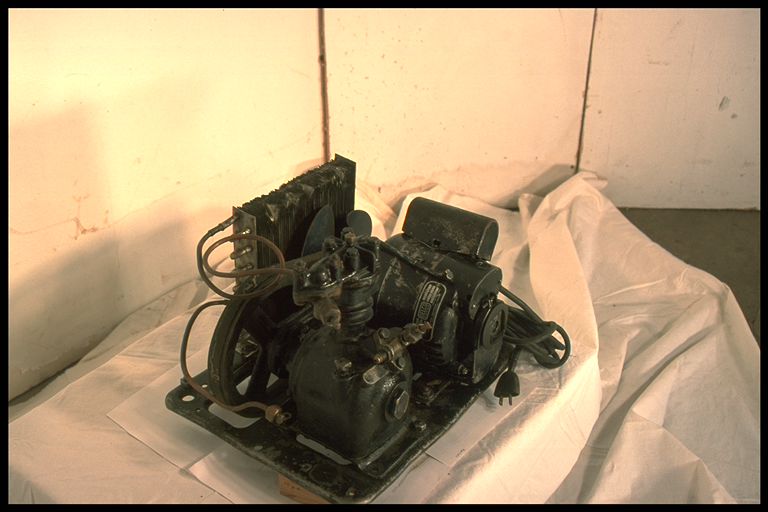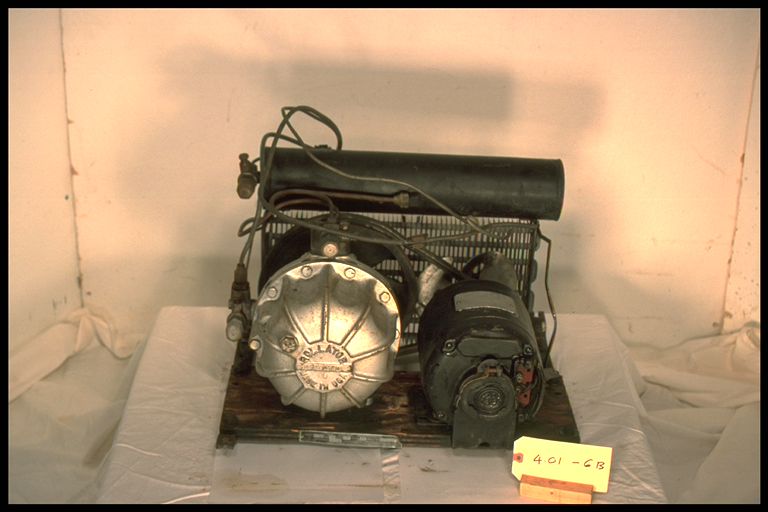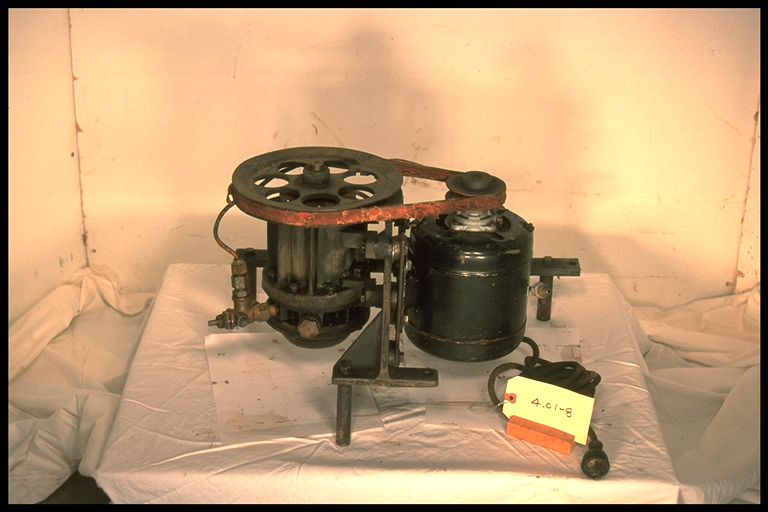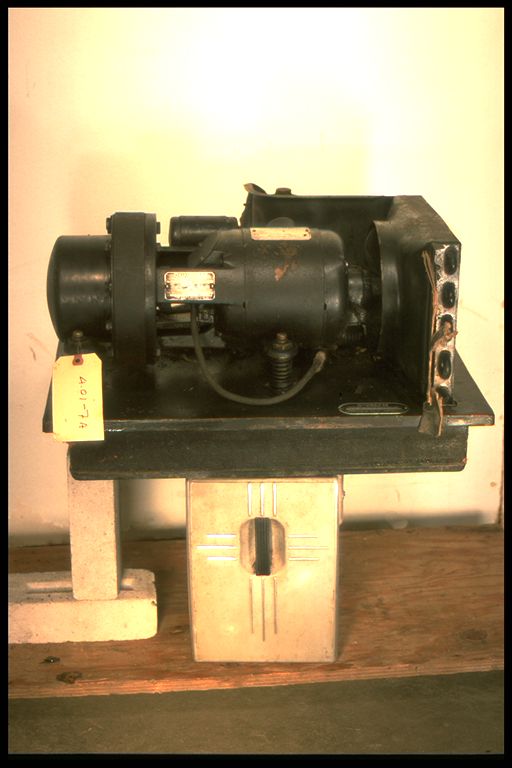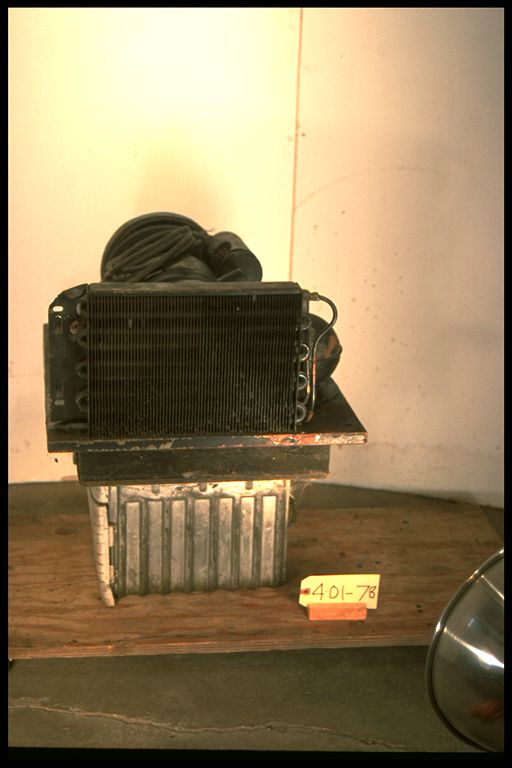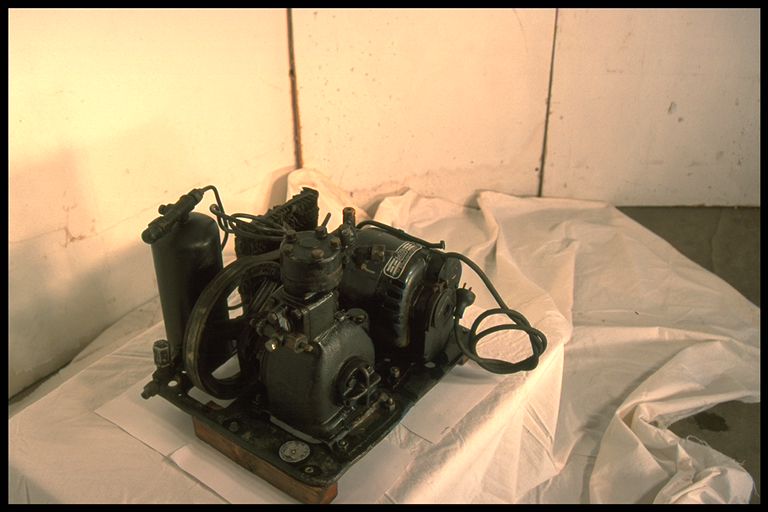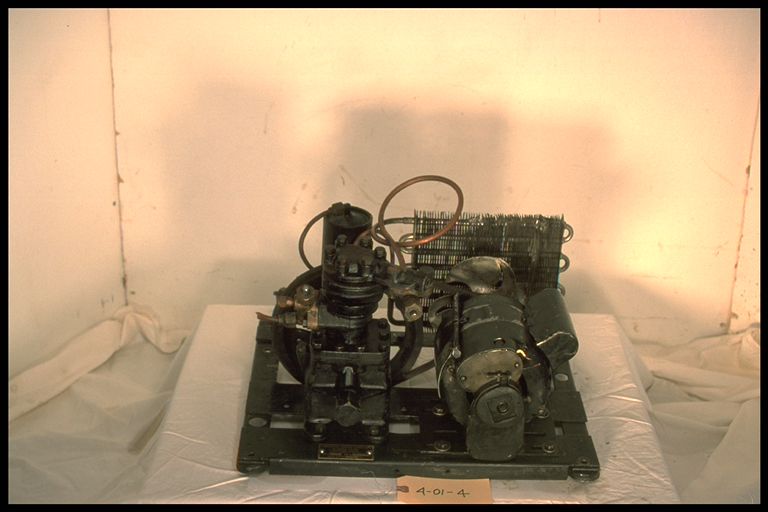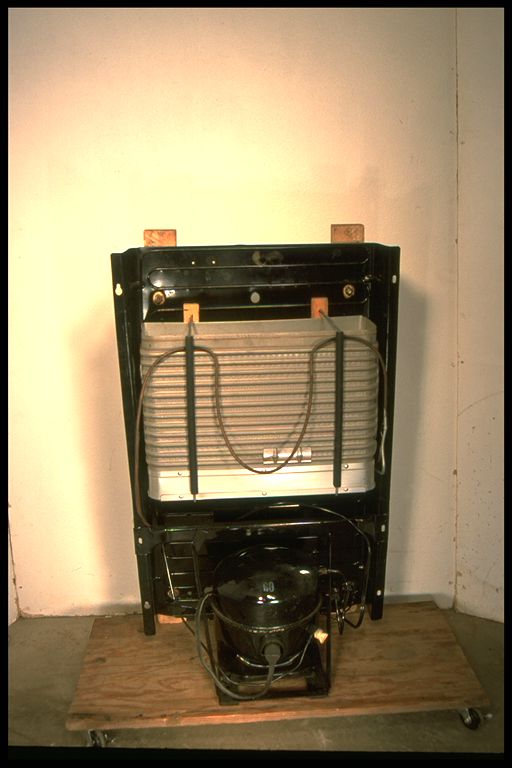4.01-6A: Norge 1935 Condensing Unit
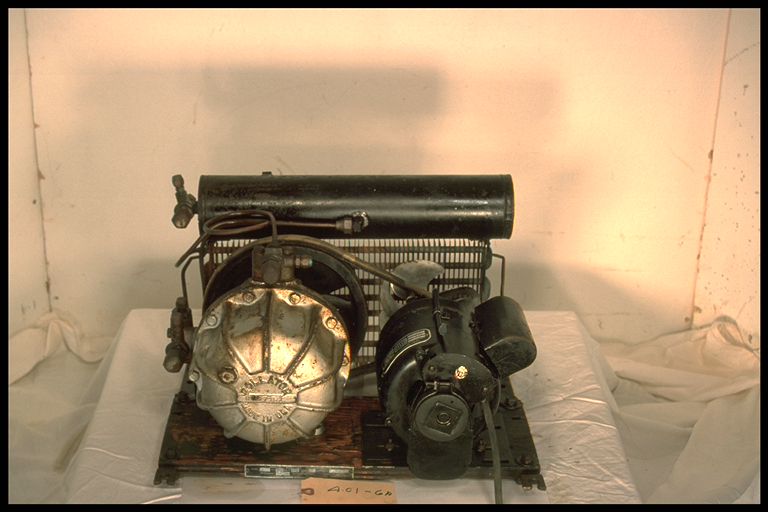
| HHCC Accession No. 2003.034 | HHCC Classification Code: 4.01-6A |
|---|
Description:
A ‘high tech’ refrigerating machine of the mid 1930’s, the ‘Norge Rollator’ was a precursor of profound change in the technology offerings of the Canadian refrigeration industry. By making use of the best engineering knowledge of the times, this innovative machine both responded to public desire for a less crude mechanical monster in the kitchens of the nation, and at the same time built further expectations for what was to soon come. It was a whole new design concept, by a new generation of world class engineering companies who had entered the now rapidly expanding North American home appliance market, the Borg Warner Corporation of Sweden, Norge Division, Borg-Warner Corp. Detroit Mich, 1935.
Group:
4.01 Refrigerating and Air Conditioning Condensing Units - Household
Make:
Norge
Manufacturer:
Borg-Warner Corp. Detroit, Mich
Model:
S4237
Serial No.:
4711231
Size:
20x 18x 12’h
Weight:
90 lbs
Circa:
1935
Rating:
Exhibit, education, and research quality demonstrating a significant benchmarks in the evolution of refrigeration machinery employed in the Canadian home ‘ a major achievement in what would be an on-going search for quieter, smoother operating refrigeration condensing unit
Patent Date/Number:
Provenance:
From York County (York Region) Ontario, once a rich agricultural hinterlands, attracting early settlement in the last years of the 18th century. Located on the north slopes of the Oak Ridges Moraine, within 20 miles of Toronto, the County would also attract early ex-urban development, to be come a wealthy market place for the emerging household and consumer technologies of the early and mid 20th century.
This artifact was discovered in the 1950’s in the used stock of T. H. Oliver, Refrigeration and Electric Sales and Service, Aurora, Ontario, an early worker in the field of agricultural, industrial and consumer technology.
Type and Design:
A wonderfully quiet new generation of refrigeration machines, with coil spring suspension and smoothly operating, belt driven, medium speed rotary compressor, the ‘Norge Rollator’. Suddenly gone was the chunk-chunk of the piston operating refrigeration compressor.
Designed for installation in the Norge cabinet refrigerator, the machine is equipped with a large copper tube and finned, single pass air cooled condenser, large SO2 refrigerant receiver, and resilient mounted 1/6th HP electric motor. The machine was mounted on a sound and vibration absorbing, five ply, plywood base, itself a significant marker of technological achievement and the changing times. It was a whole new design concept, by a new generation of world class engineering companies who had entered the rapidly expanding North American home appliance market, the Borg Warner Corporation of Sweden, Norge Division, Borg-Warner Corp. Detroit Mich, 1945.
Construction:
Material:
Special Features:
Accessories:
Capacities:
Performance Characteristics:
Operation:
Control and Regulation:
Targeted Market Segment:
The high end market, for many it would be a second refrigerator moving up from earlier less consumer friendly machines
Consumer Acceptance:
Merchandising:
Market Price:
Technological Significance:
It was a whole new design concept, by a new generation of world class engineering companies who had entered the rapidly expanding North American home appliance market, the Borg Warner Corporation of Sweden, Norge Division, Borg-Warner Corp. Detroit Mich, 1945.
What was signalled here was the end of the refrigeration condensing unit as a mere assemblage by mere assemblers of parts based, variously, on a range of buy- make decisions appropriate for the market conditions of the moment [See for example #033]. The commitment of the industry would be increasingly to specialised compressor design and to smoothly integrated systems applying state of the art systems thinking [See for example #036.
Industrial Significance:
Of significance in the Canadian industrial context is the Rogers connection with leading edge innovations in the refrigeration field.
Toronto based Rogers-Majestic, by 1928, was the largest manufacturers of radio broadcast receivers in Canada, enjoying the market boom of the times. The Rogers empire was founded on innovative the work of Edward S. Rogers, who received a Dominion of Canada patent for a ‘rectifying system’ on June 16, 1925. By August of that year Rogers was in mass production of the worlds first practical AC radio tube and the first Rogers Batteryless radio broadcast receiver.
By the early 1930’s the company was looking to expand and consolidate its reputation for technological innovation and market leader. Rogers acquired the rights to Norge name in the early to mid 1930’s to further establish themselves as Canadian leaders in the rapidly growing field of household, consumer technology [See advertisement in ‘Radio Trade Builder’, March 1935]
This international partnership arrangement would also represent a model for much of what was to come. Much in the Canadian HVACR industry would come as a consequence of corporate arrangements of convenience between Canadian and international manufacturers and suppliers to the Canadian HVACR field.
Socio-economic Significance:
Socio-cultural Significance:
Donor:
G. Leslie Oliver, The T. H. Oliver HVACR Collection
HHCC Storage Location:
Tracking:
Bibliographic References:
‘A Compleat Retrospective, Spanning the Years’, Ian Anthony, Corporate Historian, Rogers Telecommunications Incorp.
